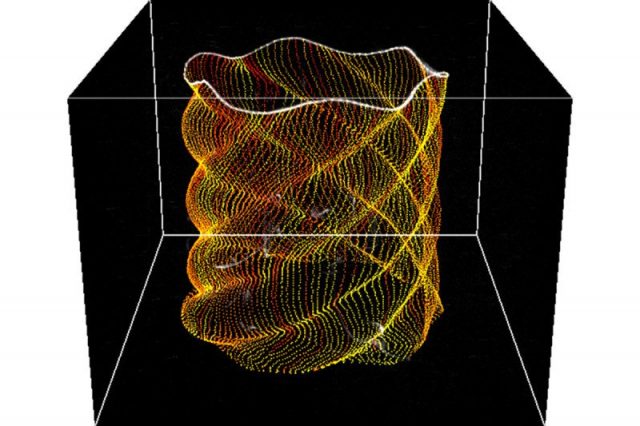MI weekly selection #244

First look at inner workings of water vortexes
The links, twists and writhes of water vortexes and how they all work together have been observed for the first time. The findings could help researchers better understand larger vortexes, such as tornadoes and other storms.
Well-preserved armored dinosaur hid from predators with countershading
The well-preserved fossil remains of an armoured dinosaur that lived about 110 million years ago reveal that it used countershading as a way to camouflage itself from predators. The nodosaur was about the size of a tank, but the countershading suggests that despite its size and armour, it was still being hunted by even larger predators.
Zinc-anode batteries get longer cycle life
Researchers report using a calcium hydroxide interlayer in manganese dioxide-zinc batteries, giving such batteries vastly improved cycle life and energy density. The advance could make those batteries, commonly used in households, more suitable for power-grid energy storage.
Dark Energy Survey suggests universe clumping was slower than thought
A map of the universe charted with gravitational lensing suggests the clumping of gas clouds, galaxies and other cosmic structures occurred more slowly than previously believed.
Diabetes drug shows promise for slowing Parkinson’s disease
Exenatide, a drug commonly used in treating type 2 diabetes, may slow the progress of Parkinson’s disease, a small study published in The Lancet suggests. The drug appears to keep neurons safe from toxins.